An image of sunlight glinting off rolling waves flickers between the two screens, alternating almost stroboscopically with a black frame. A rural scene on an overcast day is rudely interrupted by a sudden camera lurch into a clutch of votive candles, their flames twitching and dancing in the breeze. A close-up of a man’s forehead with the words ‘Inside it’s all a mess’ in triplicate, circling round and round themselves like a nagging thought that won’t go away. The soundtrack is all coarse textures and electronic gurgles: the crackle of a record’s runout groove, indistinct mutterings and whisperings, scraping and pattering and swishes and swoops guaranteed to get your scalp tingling, a static buzz shooting down the spine. The Bad Feel Loops, Benedict Drew’s new two-channel film, is a nervous, febrile piece of work. Just watching it feels like a panic attack coming on, startlingly intense yet hazy and indistinct as the aura of a burgeoning migraine.
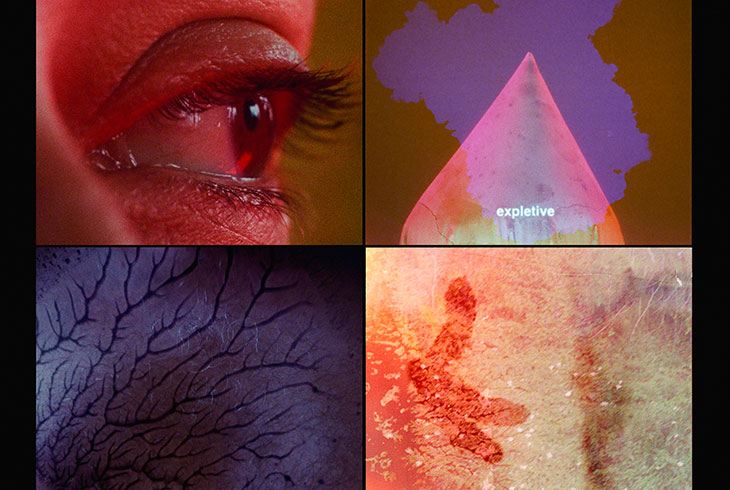
Stills from The Bad Feel Loop (2019), Benedict Drew. Courtesy the artist and Matt’s Gallery, London
The work is a new commission from King’s College London’s Science Gallery, which opened last year. It takes its place as part of an exhibition called ‘On Edge: Living in an Age of Anxiety’, where it sits alongside works by Cally Spooner, Harold Offeh, and research fellow Kris De Meyer from the university’s department of neuroimaging, among others. But The Bad Feel Loops also continues and extends Drew’s longstanding interest in the sometimes messy interactions between online and offline space. One of his earliest films, The Persuaders (2012), pictured the sludge left over from the mining of rare earth minerals for computer components becoming animate and preparing to take over the world. When I interviewed Drew for the Quietus back in 2015 he called it a kind of ‘digital materialism’. But perhaps this term fails to properly convey the emotional core of Drew’s work. Even the common earth-sludge creatures of The Persuaders are imbued with an odd kind of pathos. He has a gift for eliciting sympathy for, if not quite the devil, then at least some fairly weird and unsavoury elements. With The Bad Feel Loops, Drew puts to work all his formal skill at editing and sound design to not merely represent anxiety states but place the viewer directly in the grip of them. As he admitted to me in 2015, Drew is ‘more interested in what [the work] does than what it is or why it is’. The film literally stutters and shakes.
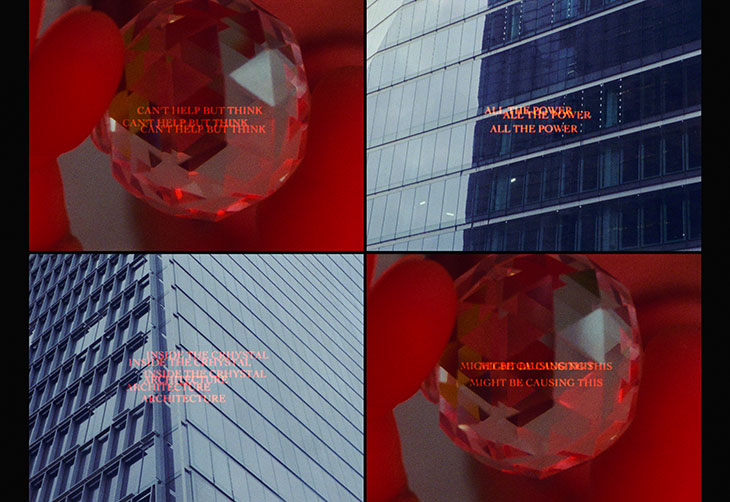
Stills from The Bad Feel Loop (2019), Benedict Drew. Courtesy the artist and Matt’s Gallery, London
Nevertheless, The Bad Feel Loops does not altogether shy away from analysis. Entering the projection space, one encounters a wall text with a quote from Franco ‘Bifo’ Berardi: ‘power is no longer constructed by silencing the crowd (for example, through censorship, broadcast media, or the solemnity of political discourse), but is based on the boundless intensification of noise.’ The activist and political philosopher, who was formerly associated with the Italian Autonomia movement of the 1970s, has in recent years focused his analysis more and more on the psychosocial effects of what he calls ‘info labour’ on human subjectivity under post-industrial capitalism. Much of Drew’s film, likewise, seems to hinge on the contrast between the hard, gleaming surfaces of capital – glass-fronted skyscrapers, the looming hood of a silver car, a 50 pence piece – and the frailty of human flesh, shown always in extreme close-up to reveal every pore and blemish. Anchoring the film’s credo in typically tentative fashion, one of the film’s nagging thoughts, circling round and round itself, reads: ‘Can’t help but feel all the power inside the crhystal [sic] architecture might be causing this.’
‘On Edge: Living in an Age of Anxiety’ is at the Science Gallery London until 19 January 2020.
Unlimited access from just $16 every 3 months
Subscribe to get unlimited and exclusive access to the top art stories, interviews and exhibition reviews.

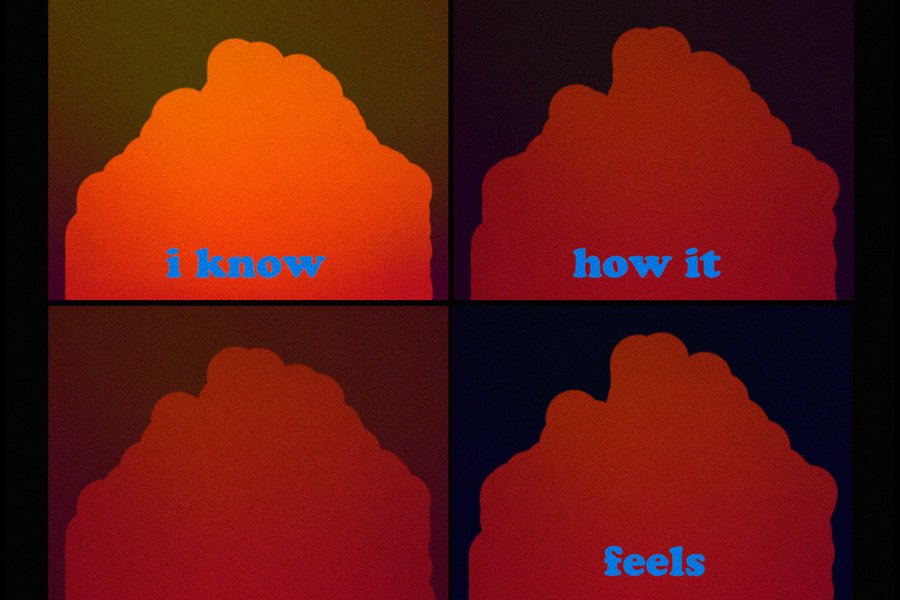
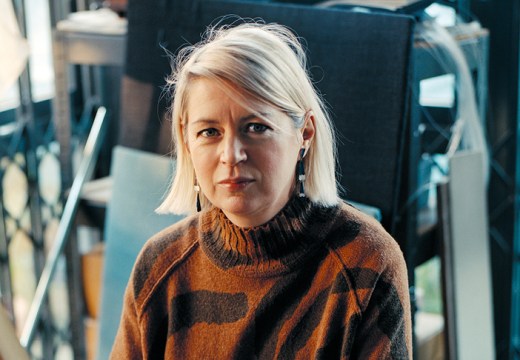
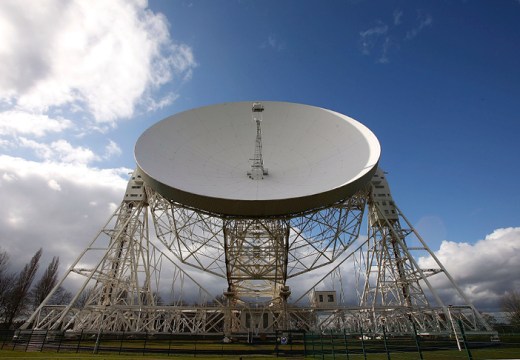
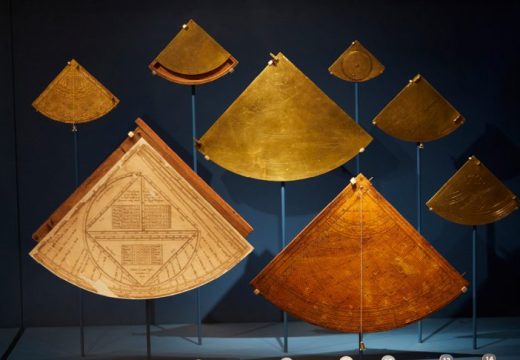









![Masterpiece [Re]discovery 2022. Photo: Ben Fisher Photography, courtesy of Masterpiece London](http://www.apollo-magazine.com/wp-content/uploads/2022/07/MPL2022_4263.jpg)
Why are fathers so absent from art history?